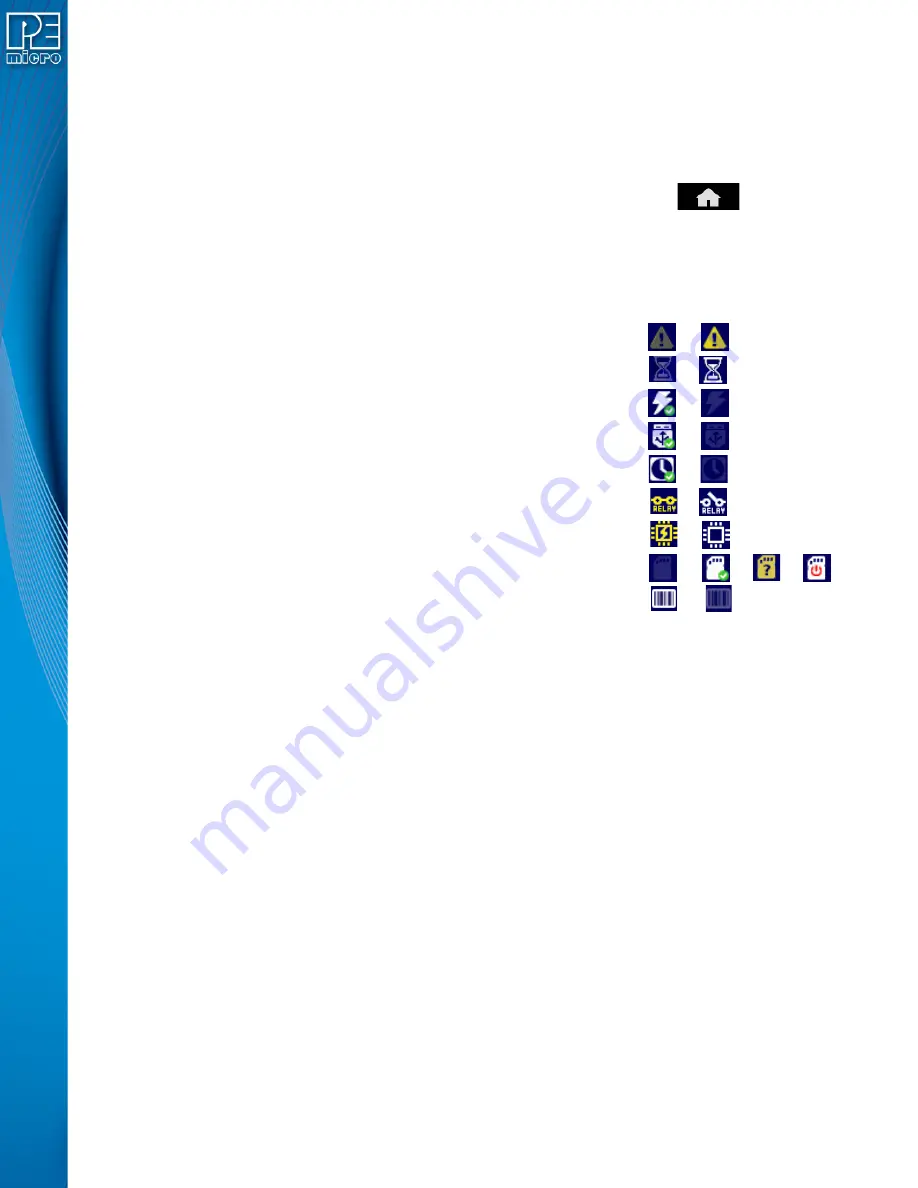
User Manual For CYCLONE
FX
Programmers
47
7.2
Operation Via LCD Touchscreen Menu
Once the
CYCLONE
FX
is configured for stand-alone programming it may be operated by making
selections from the touchscreen LCD menu. This section describes the menu functions that allow
the user to easily execute stand-alone programming functions using the touchscreen LCD.
7.3
Home Screen
The home screen appears when the Cyclone is powered on, or when the
Home button
is tapped.
7.3.1
Icons
A row of icons in the upper right corner indicates the status of various attributes of the Cyclone.
Note:
The user may tap on the row of icons to view the meaning of each of the currently displayed icons.
Cyclone Unit Status:
Ok / Bad
Programming Status:
Ready / Busy
Target Power Relays
: On / Off
USB-To-PC Enumerated:
Yes / No
Real-Time clock Enabled & Working:
Yes / No
Cyclone Power Relays:
Closed / Open
Target Device Is Powered*
: Yes / No
SDHC Memory Card:
None / Valid / Unformattted / Reset Cyclone**
Barcode Scanner:
Detected / Not Detected
*
Target Device Is Powered - “Yes” indicates that the
CYCLONE
FX
detects power on the Vcc pin
of the target device programming header.
** SDHC Memory Card - “Reset Cyclone” indicates that the Cyclone needs to be reset before the
SDHC card will register as Valid. The user can push the Reset button which is located on the front
side of the Cyclone, below the LED indicators.
7.3.2
Configurable Display Area
The main area of the home screen can be configured to optionally display the following
information, by using the Cyclone IP Configuration Utility (see
1. Firmware version of the Cyclone (always shown).
2. IP address assigned to the Cyclone.
3. Name assigned to the Cyclone.
4. Number of programming images in the Cyclone’s memory.
5. Name of the selected programming image.
6. First serial number associated with the selected image
7. Current status.
8. Results of the last operation performed.
9. Time and date.
10. Status Window and Main Menu button (always shown).
11. Target voltage and/or current






























